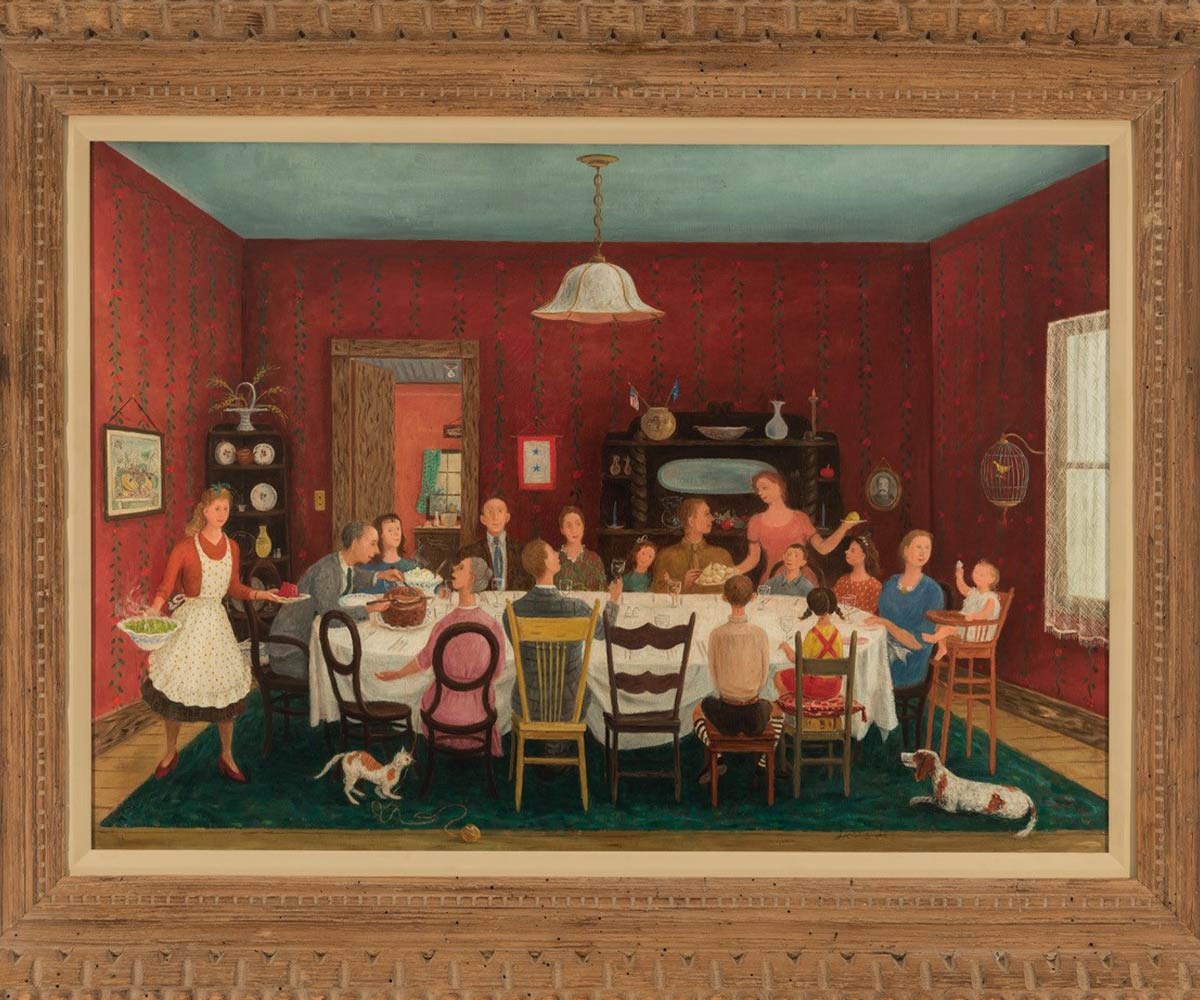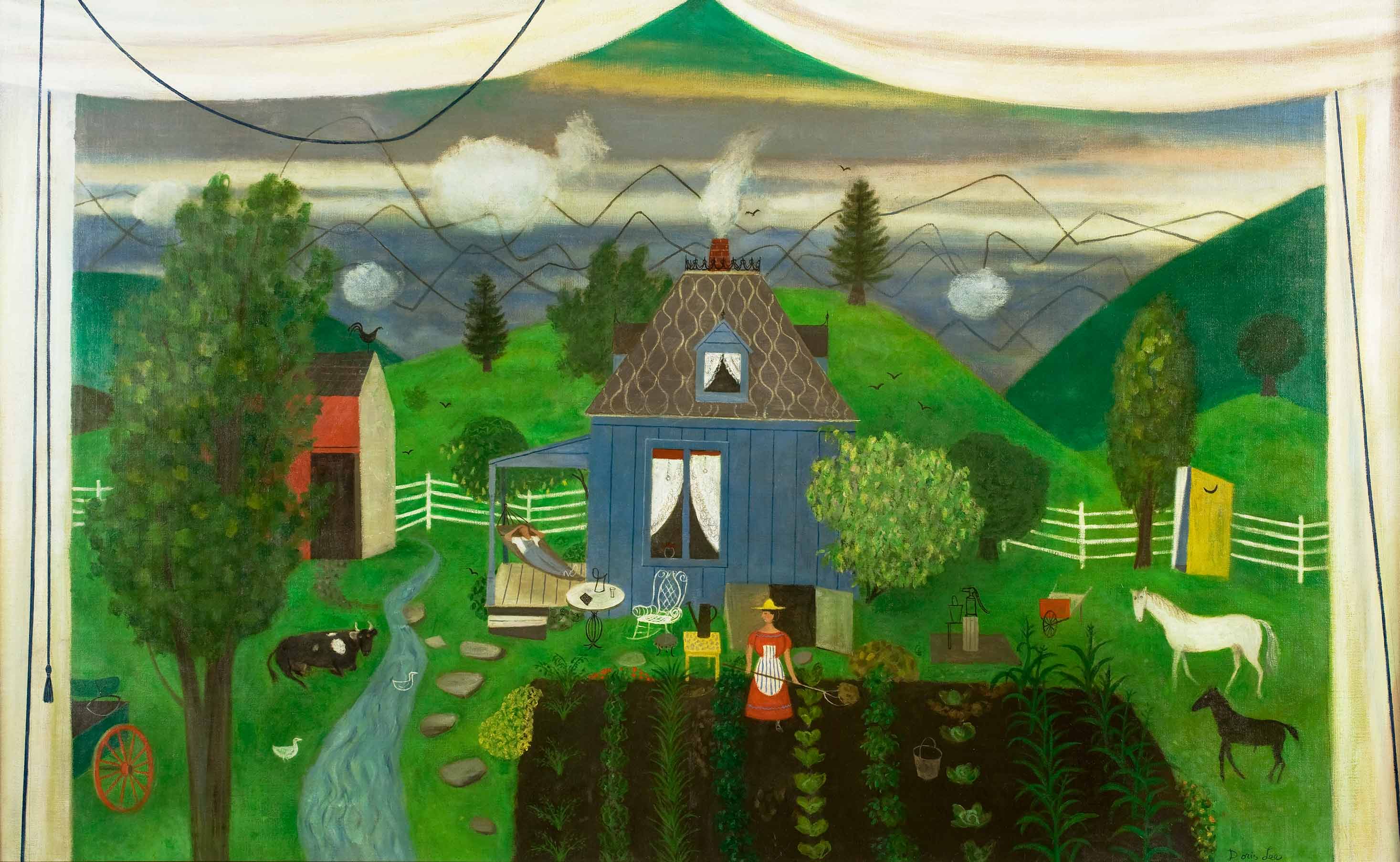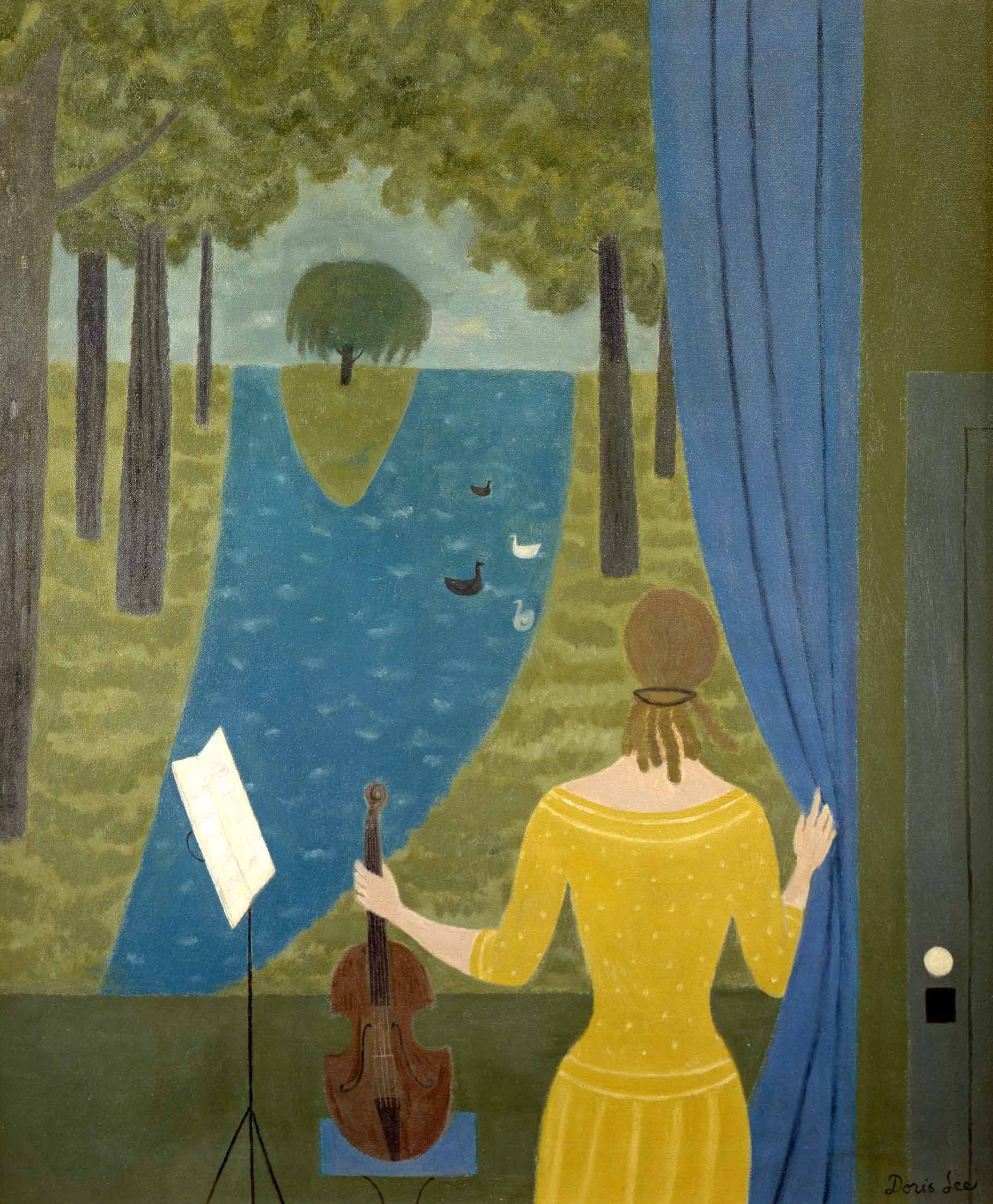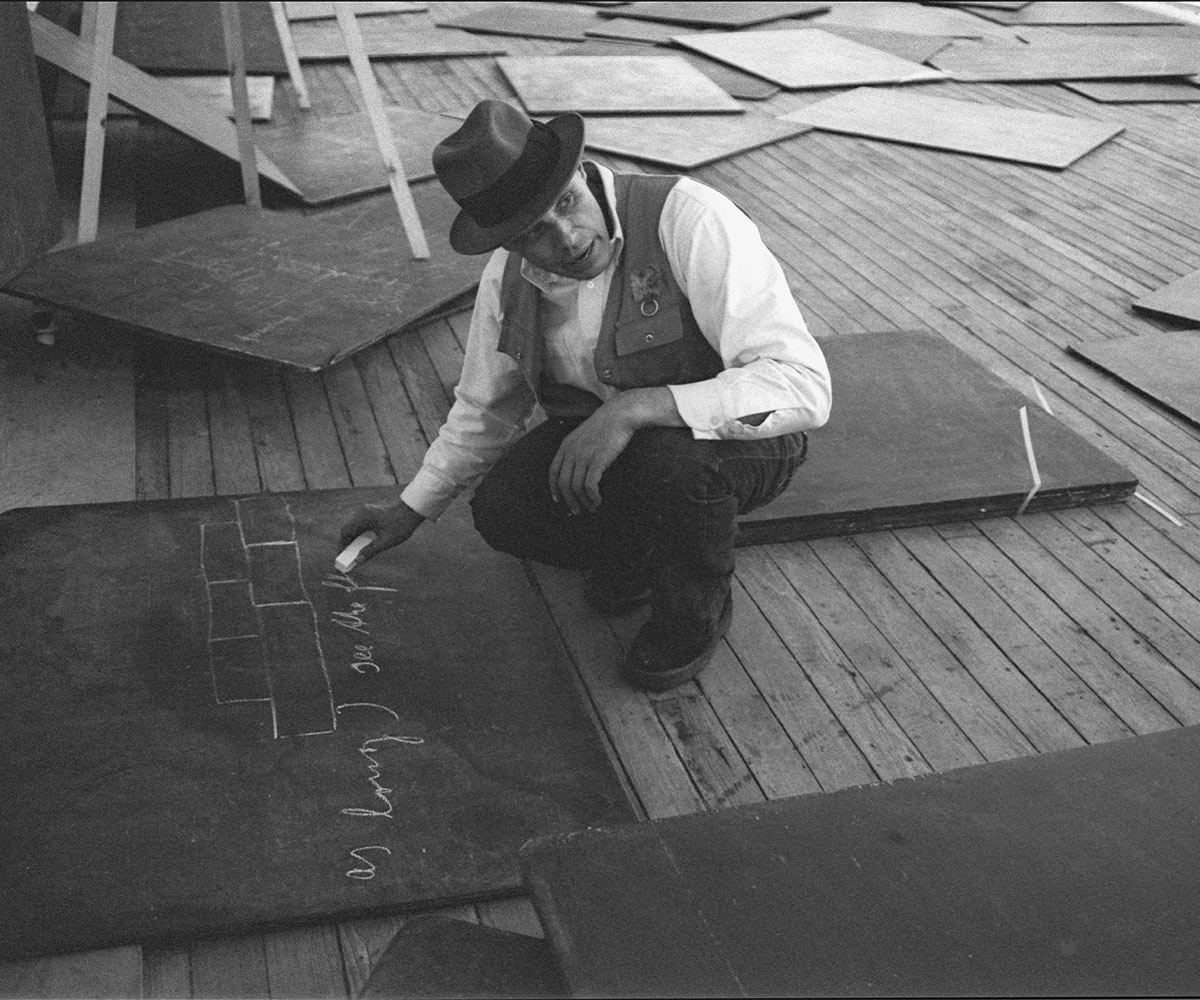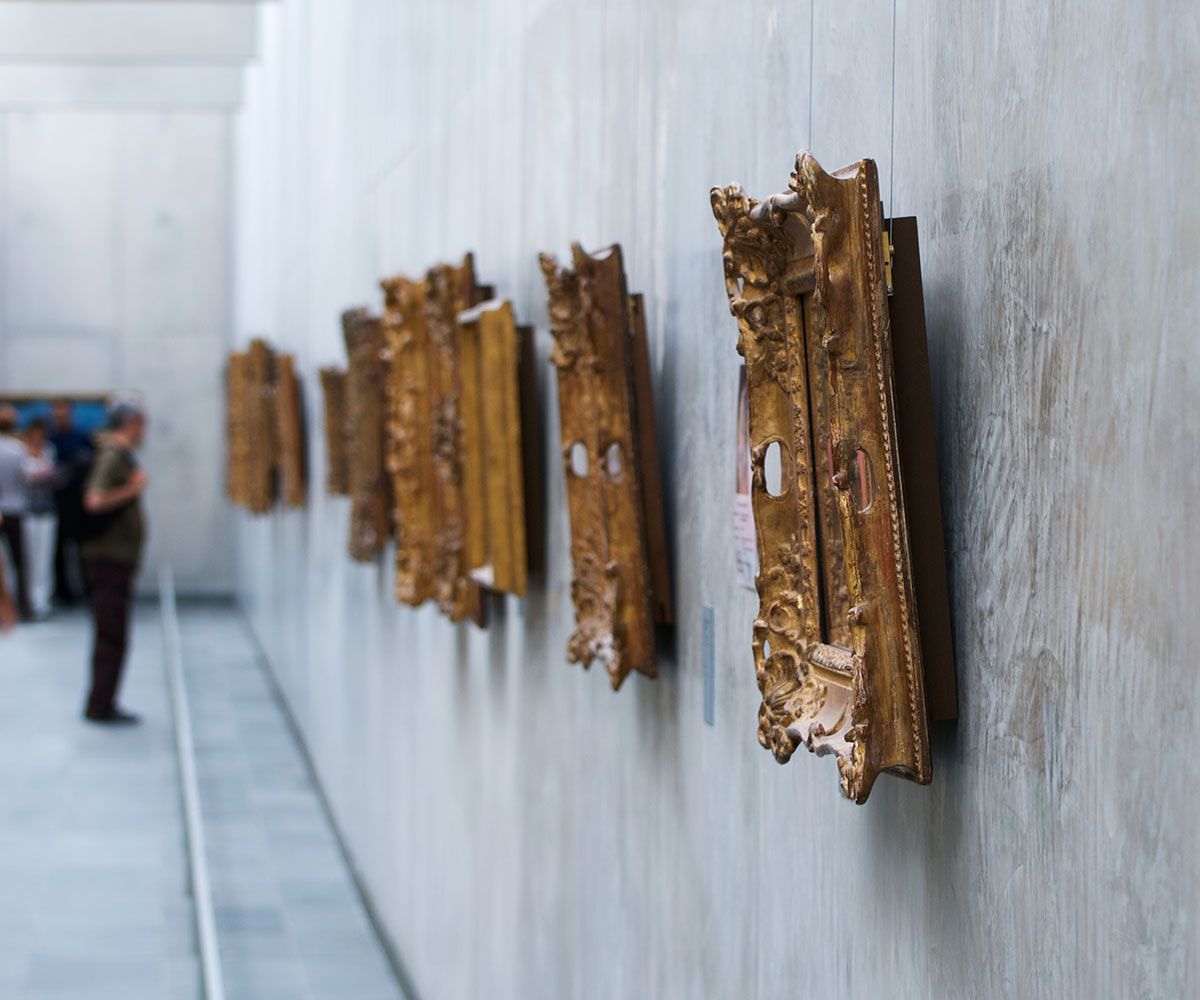Doris Lee (1904-1983) may not be a household name like her male peers, Thomas Hart Benton, Grant Wood and Milton Avery, but she should be.
Based in New York City and Woodstock, New York, Lee had a thriving artistic career from the mid-1930s through the 1950s. Her work evolved stylistically from figuration to abstraction, all the while distinctly fusing folk and modernist art trends.
An exciting new exhibition of Lee’s paintings, commercial prints, books and textiles at the Westmoreland Museum of Art brings to light her range and restless creativity and gives us an opportunity to revisit her unique contributions that have been largely overlooked.
American Regionalism
Lee first gained recognition during the 1930s and 1940s working in the Regionalist style then in vogue in the US. Such works epitomized a nostalgic view of rural America, as the country grappled with the rapid changes taking place amid the Depression and World War II.
Following the early success of her painting Thanksgiving, which won her the prestigious Logan Purchase Prize in 1935 at the Art Institute of Chicago, Lee was commissioned to paint murals for the United States Post Office buildings. The Maynard Walker Galleries, a major New York City gallery at the time, gave her their first one-woman exhibition in 1936. These were impressive accomplishments for a young woman working within the confines of a male-dominated art world.2
An element of humor and whimsy underlies the seeming naivety and sentimentality of Lee’s scenes. In paintings such as The Family Reunion of 1942, Lee captured the variety of human experience through a playful combination of realism and parody, alluding to the 16th century Dutch painter Pieter Bruegel the Elder, as well as American genre painting.3
Woodstock
Life and times
The seemingly folksy character of Lee’s works belies her deep art historical training, extensive travels, and art world connections. Born in Aledo, Illinois, Lee studied in Paris with the Cubist painter André L’hote, at the Kansas City Art Institute with the American Impressionist Ernst Lawson, and at the California School of Fine Arts with Arnold Blanch, who also remained her partner for most of her life.
Lee initially kept a studio in New York on East 14th Street, where she recalled being in contact with various well-known artists including Stuart Davis, Marguerite and William Zorach, Arshile Gorky, Yasuo Kuniyoshi, and Bradley Walker Tomlin.4 She also traveled widely through her commercial work to Mexico, Cuba and Africa, writing and illustrating various articles for Life magazine. When traveling to Mexico, Lee and Blanch stayed with Diego Rivera whom they had met in San Francisco.5
In 1942, Lee purchased a house with Blanch in Woodstock, New York where the couple was at the center of the thriving Woodstock Artist’s Colony.6 Founded in 1902 by Ralph Radcliffe Whitehead and Hervey White as a utopian community for artists, Woodstock attracted numerous, diverse personalities experimenting in a range of styles.
It also had a reputation as a haven for liberated artistic women.7 Lee and Blanch were credited at the time with bringing more artists to Woodstock than anyone else, regularly hosting parties at their residence.8 Lee’s house and environs at Woodstock feature in many of her works, as in The View, Woodstock, of 1946.
Folk influences
Lee and Blanch were active collectors of folk art, which they displayed prominently at their Woodstock residence.8 They were early collectors of William Edmondson, a former carver of tombstones who turned to sculpture and the first African American given a solo exhibition at the Museum of Modern Art in New York in 1937, as well as Morris Hirschfield.9
Lee was keenly aware that both folk art and modernism shared a reductive vocabulary, a paring down to the essence of objects. Lee and Blanch’s 1947 instructional book, Painting for Enjoyment, illustrated many works by folk and outsider artists, including Henri Rousseau, Grandma Moses and Horace Pippin.10
Lee’s simple lines, flat unmodulated colors, patchwork patterns, frontal views and lack of traditional perspective reflect her deliberate application of both folk and modernist art approaches, such as Cubism and Fauvism. Lee elevates everyday objects, clearly relishing in their form and textures. In Grapefruit Still Life, a simple bowl of grapefruit sits on a wooden plinth, in perfect equilibrium between abstraction and figuration, folk art and modernism.
Drawing on a rich tradition of American furniture painted by rural craftsmen from the 17th to 19th centuries, as well as American still life, Lee expertly filters such motifs through a stylized, near-geometric pattern – the grapefruit bowl hovers in mid-air while leaves dance in the background as if part of a patterned wallpaper.


